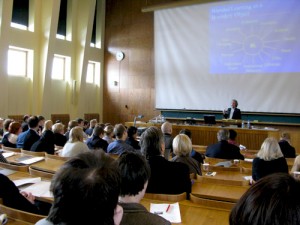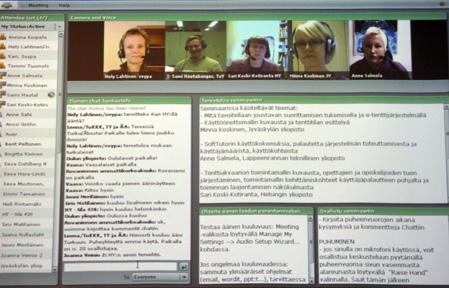This is a followup (“sequel”, if you will) to
my initial e-reader post. [Low, raspy male narrator voice:]
“As the year 2011 begins, the electronic book market has seen a bit more action than anticipated during the last year, at least on the device side of things thanks to a major player stirring the kettle – Apple with its iPad [Wikipedia] made tablet computing sexy again…”
[youtube http://www.youtube.com/watch?v=y2Hz8dhQw8Q]
Apple’s products usually generate a lot of emotions, and are often the subject of some humour as well…
[youtube http://www.youtube.com/watch?v=8eF0y0IfpPU]
The iPad is more of a big iPhone without the phone capabilities, using a normal backlit touch display (albeit a high quality one). It is capable of browsing the net, watching videos and of course reading e-books but doesn’t offer the paper-like readability and battery life of the e-ink readers. But its sheer versatility and 10 hours battery life might be enough to make dedicated reading devices less desirable – hopefully this competition will speed up the evolution of the paper-like display even more. Apple also launched its iBookstore alongside the iPad, so they do have e-books in mind with the device alongside games, music & movies… although becoming the replacement for news(papers) might be what the iPad really is aiming for where consuming digital text is concerned. This is hinted by the imminent launch of media mogul Rupert Murdoch’s
The Daily [engadget.com], an iPad exclusive 7-days a week news magazine.
Amazon, currently holding the “iPod”-status of e-readers with its Kindle-line launched two generations of Kindles (now in its 3rd generation) since my last post in 2009, including
Kindle DX [amazon.com] which is specifically targeted for reading textbooks & articles with an A4-sized screen – although it’s
not apparently perfect yet for academia, at least according to Princeton University students [The Daily Princetonian] who tested the device extensively. The Kindle also launched worldwide – you can now order it from Amazon.com and it works in most welfare states.
[youtube http://www.youtube.com/watch?v=gotyZNvtc44]
The free 3G-wireless functionality that enables you to buy books & browse magazine content is a bit crippled in Europe or not available in some countries (in Finland you can buy books from Amazon and browse Wikipedia, but that’s it).
The large bookstore Barnes & Noble have also entered the ring with their e-ink reader called “Nook” and the “Nook Color”, which is an Android tablet more like the iPad but cheaper & smaller. As a big bookstore they apparently have a similar business model to Amazon, where the books can be read on their Nook-devices and on PC:s & iPhones. As a novelty, these books have DRM that allows them to be “lent” to a friend for up to 14 days, during which you cannot access the book yourself.
All in all, during 2009-2010 you could definitely watch the
Wikipedia comparison list of different e-ink readers [wikipedia.org] grow, and the prices got lower too.
New technology
The black & white e-ink displays improved during 2010 with the new Pearl-type displays, and the company making these – E Ink Corporation. – also unveiled
a colour e-ink display [crunchgear.com], which however still is too slow a technology for moving images and it “only” has 4096 colours (the
Amiga HAM-mode [wikipedia.org] comes to mind) and apparently the colour images look a bit desaturated on this type of e-paper.
There is also a new type of low-power LCD-display marketed as Pixel Qi (as is the name of
the company producing it), which can enter a special black & white mode without backlight that makes text easy to read and keeps power consumption low. The first tablet computer using this display is called the
Adam [wikipedia.org], and has been surrounded by a lot of hype. Thanks to the Pixel Qi-display, it combines the good features of e-ink readers with iPad tablet-like features. An interesting device for sure!
[youtube http://www.youtube.com/watch?v=pGUKHDBoTEc]
The devices are there – where are the books (in Europe)?!
OK, it’s fairly trivial to get a dedicated device for reading e-books today. The problem is finding the books – there are many stores and few of them have all the titles you would like “in stock”, but the bigger problem is that they most likely only sell to US or UK customers (if we’re talking about English books, how the situation is for other languages beats me). Also, the prices of the e-books themselves are of course more expensive in Europe as shipping e-books overseas is soooo expensive through the internet. And the books are often crippled with DRM, requiring additional software or bookstore-approved devices to be able to read them. Globalization is funny in the way that companies may freely go to where labour is the cheapest, but the consumer may not buy the product where it is sold at the cheapest price. Free markets my… er, donkey.
So, e-books (like all digital content) are facing the dilemma where old rules of distribution really shouldn’t apply anymore, but they are artificially upheld. But some publishers “get” e-books, and in my last post I also mentioned sci-fi publisher Baen, who have the e-book store
Webscriptions. That’s were I purchased my first e-book from, and it went really nicely. No DRM, I can download it as many times I like, the price was right… and I could read a free book by the same author first to see if I wanted to buy more, which I did.
At the moment a good bet is to use an e-book search engine / price comparison site like
Luzme [luzme.com], which also shows you if you can buy the book outside the US/UK.
So, the devices are there and
sales of e-books are growing [idpf.org] – now it’s just about finding the content. And academics might be better of with a tablet like iPad or Adam for the time being, since they currently offer the functionality that research requires – flipping through tons of short articles while bookmarking and making notes. The slow e-ink readers are still king for novels. Now excuse me, I think I’ll watch some TV…
Official soundtrack to this post
Somewhat related to literature…
[youtube http://www.youtube.com/watch?v=BW3gKKiTvjs]


